The beauty and versatility of the Gypsy Vanner, also known as the Gypsy Vanner Horse, Gypsy Cob, and Irish Cob, makes them one of the most sought-after equine breeds in the world today. This gentle and alluring horse makes you feel safe when you ride and leaves you in awe when you watch one compete. Their calm temperament and intelligence make them the ideal horse for beginners to ride. Whether you are a new or experienced rider, everyone can enjoy the adventure of a Gypsy Vanner Horse!
Gypsy Vanner Horse Characteristics
Although Gypsy Vanners are a relatively small horse breed, they have broad chests and shoulders, allowing them to easily pull carriages or carts. They are best known for their spotted and mixed-color coats. The most common colors they come in are either piebald (mixed black and white) or skewbald (mixed brown and white). Gypsy Horses are easily recognized by their long, flowing manes and tails, as well as heavy feathering below the knees.
Gypsy Horse Size
The average Gypsy Vanner measures about 12-16 hands, or about 48-64 inches tall. They can weigh anywhere between 1,000-1,800 pounds, with those on the heavier side having more draft horse blood. Both male and female Gypsy Vanners are similar in size, although females tend to be slightly smaller, usually by just a few inches or pounds. This minimal size difference between the sexes is a characteristic trait of the Gypsy Vanner breed, emphasizing their well-balanced and sturdy conformation.
Gypsy Horse Personality
Gypsy Vanners are among the most popular horse breeds today because they are intelligent, docile, and easy to train. They are a great beginner horse and often the favorite option for families. They have a well-mannered nature, which allows them to bond with other people and children easily.
In recent years, trainers have also begun to use Gypsy Vanners for therapy treatments or equine therapy. This breed has become the ideal horse for therapy because of its easy-going personality. They have treated people from special needs patients to military veterans with post-traumatic stress disorder (PTSD).

Gypsy Vanner Horse History
The Gypsy Vanner is a breed with a deep and rich history, originating with the Romani people from Great Britain around the 1850s. At the time, the "fashionable" or popular breeds in Great Britain were solid coloured horses, and owners would often remove the mixed color horses from the main herd. However, the Romani people considered the piebald (mixed black and white) or skewbald (mixed brown and white) horses to be more valuable and would take the unwanted ones, eventually introducing them in the Appleby Horse Fair.
The Romani people wanted a horse breed that was beautiful, mild-mannered, easy to ride, and strong enough to pull their caravans throughout the countryside. By selectively breeding different horses, the Romani began to create the perfect caravan horse. They chose the Shire and Clydesdale horses for their strength and feathering and Welsh Cobs and the Dales Pony (coal horse) for the smaller sizes.
The resulting horse breed became what we know as the Gypsy Vanner Horse. In fact, the word vanner means "a coloured horse suitable to pull caravans" in Old English! The first Gypsy Vanner to arrive in America was in 1996, brought over by Dennis and Cindy Thompson (the second one being the Gypsy King, the first sire). While they were on a business trip to England they became increasingly fascinated with the breed.
After their travels, they researched the horse's background and how the Romanis selectively bred this gentle but sturdy horse. The Thompsons then established the Gypsy Vanner Horse Society, the world's first Gypsy Horse registry dedicated to the in-depth study of the breed. Today, the Gypsy Horse Association oversees everything related to the breed.
How to Care for a Gypsy Vanner Horse
With its calm disposition, the Gypsy Vanner Horse is one of the most straightforward breeds to train. However, they require a particular diet due to their slow metabolism, which causes them to gain weight quickly. They are prone to quickly gaining weight if not monitored closely, so their diet should consist of high-quality hay, limited grains, and appropriate supplements to ensure they receive the necessary nutrients without excess calories.
Gypsy Horse Training
Many seasoned trainers have attested that Gypsy Vanner Horses are among the easiest breeds to handle and manage, thanks to their inherently calm nature and willingness to learn. These horses are not only docile but also highly intelligent, making them quick to pick up on new commands and routines.
Their intelligence, combined with a strong work ethic, allows them to excel in various disciplines, from riding to driving and even competitive events. However, like most horses, Gypsy Vanners require patience, time, and consistent training to fully develop their skills. While they are quick learners, they thrive in environments where they are treated with understanding and respect.

Nutrition & Feeding for a Gypsy Vanner
Many owners opt for a high-fat, low-sugar diet to combat the issue of slow metabolism in this breed. Their slow metabolisms can be beneficial because Gypsy Horses need less food to maintain their weight. This breed may need to be restricted with a grazing muzzle in the springtime when the grass grows quickly. Because activity level influences every horse's caloric needs, performance, and competition Gypsy Horses may require a high carbohydrate and protein diet as well.
Related: CBD Pellets for Horses
Coat Color & Grooming
Gypsy Vanners require consistent and dedicated grooming. If they live in a rugged environment, dirt or mud can get stuck in their coats or feathering. The buildup can cause the feathering to become knotted, so owners will have to pay this breed constant attention. The feathering can also cover up swelling or attract moisture, so it's important to clean as necessary.
A common way to clean a horse's feathering is using shampoo and conditioner. This can be time-consuming as the feathering will still need to be checked daily if the horse owner wants to keep the hair in good condition. Braiding is also an alternative to limit the amount of dirt collected. If the feathering continues to get dirty often, the owner can decide to shave it off if needed.
Health Problems
The Gypsy Vanner Horse is strong and robust but can be prone to certain health conditions if not cared for properly. If dried dirt or mud gets caught in the feathering, it can often lead to many cuts and scratches on the legs. These cuts and scrapes can cause significant health issues, such as deep swelling or even lameness.
Hyperkeratosis
An over-production of keratin, or hyperkeratosis, is also a significant risk factor for Gypsy Vanner Horses. Keratin is the protein responsible for the breed's long mane, tail, and feathering. Too much keratin can cause thick, crusted growths to form in the feathering.
Mallenders and Sallenders
Keratins growths can lead to mallenders and sallenders, scabs that form in the back of the legs, or the front legs, respectively. These growths need to be checked for and removed early on to prevent bacterial or fungal infections. Owners will need to be watchful for these infections since repeated cases can cause lymphedema in horses. The infections can cause intense discomfort for the horse, causing lesions, scabbing, and deep swelling in the skin. Sometimes, it can even lead to maggot infestations if not treated early.
How to Get a Gypsy Vanner Horse
As one of the more popular horse breeds today, Gypsy Vanner Horses are becoming increasingly expensive. They are in the $10,000 price range, with purebreds going for more. However, they can be a lot harder to find. People have started to breed more Gypsy Horses to match the increasing demand, so it is essential to find a reputable breeder for a healthy and strong horse. Check out the Gypsy Horse Association for more information about this wonderful breed.

More About this Breed - Gypsy Vanner Horse
A popular breed often associated with Gypsy Vanner Horses is the Drum Horse. However, these two breeds are not the same. Gypsy Vanners must be bred with a larger feathered horse such as a Shire or a Clydesdale to get what we know as the Drum Horse today. In 2017, Lexlin Gypsy Ranch, the largest Gypsy Vanner Horse ranch in the US, donated 65 Gypsy Horses to the Professional Association of Therapeutic Horsemanship International (PATH Intl.).
They estimate that these horses will provide over 175,000 therapy sessions per year and can offer millions of sessions throughout their lifetime. As the success of horse therapy begins to pick up, more people will start to realize the usefulness and versatility of the Gypsy Vanner breed. Before you leave check out our premium products for horses that are packed full of beneficial ingredients.
Final Thoughts - Gypsy Vanner Horse
The Gypsy Vanner Horse is a unique and captivating breed, known for its calm temperament, striking appearance, and ease of training. With their deep history rooted in the Romani culture, these horses have become a symbol of beauty and versatility. Proper care and understanding of their specific needs, particularly their diet and training, are essential to maintaining their health and well-being.
Whether admired for their stunning looks or appreciated for their gentle nature, Gypsy Vanner Horses continue to enchant horse enthusiasts around the world, making them a truly remarkable breed.
FAQs
What makes the Gypsy Vanner horse distinct from other horses?
This breed stands out for its unique combination of physical traits, including a well-muscled, compact build, a broad chest, and distinctive feathering around its legs. Unlike many breeds, they exhibit a striking variety of coat colors, most commonly in piebald (black and white) or skewbald (brown and white) patterns.
These horses are also known for their voluminous, flowing manes and tails, adding to their enchanting appearance. Beyond looks, their gentle temperament, intelligence, and versatility make them ideal for riders of all levels, including those seeking therapy horses.
How did this breed originate, and why was it developed?
Originating with the Romani people of Great Britain, this breed was carefully developed in the 19th century to meet the Romani’s unique needs for a sturdy yet beautiful horse that could pull caravans. The Romani valued a horse that was strong enough for heavy work yet calm and easily trained.
By breeding draft horses such as Shires and Clydesdales with smaller breeds like Welsh Cobs and Dales Ponies, they created a horse that embodied both strength and elegance. These horses were prized for their endurance and mild manners, fitting the Romani lifestyle of continuous travel and close human interaction.
What are the key personality traits of the Gypsy Vanner Horse?
This breed is celebrated for its calm, friendly, and highly trainable personality. Known to form close bonds with their handlers and families, these horses are typically patient and gentle, making them a wonderful choice for beginners and experienced riders alike. They also have an affinity for people and tend to be social, which contributes to their success as therapy animals. Their intelligence and responsiveness make them easy to train, whether for riding, driving, or specialized activities like therapeutic horsemanship.
What special care do Gypsy Vanners require?
While relatively low-maintenance in temperament, this breed has specific care needs due to its distinctive coat and feathering. Owners should groom them regularly to prevent tangling and maintain their unique feathering, especially in muddy or wet environments.
Additionally, their slower metabolism requires a tailored diet to avoid weight gain. High-quality hay, limited grains, and occasional supplements can help manage their weight and meet their nutritional needs. Some owners use grazing muzzles in the spring to limit overeating and prevent obesity-related issues.
How do I manage their diet and feeding?
These horses benefit from a high-fiber, low-sugar diet due to their slower metabolism. Quality hay is a staple, while grains should be limited to prevent excessive weight gain. Many owners find that a high-fat, low-sugar diet works well, and grazing should be monitored carefully, especially during seasons of lush grass growth. Active or competition horses may require additional carbohydrates and protein, but it's essential to balance their diet to avoid metabolic issues while maintaining their energy for work.
Are there any common health issues associated with this breed?
This breed is generally robust and healthy but does have a few health concerns, particularly related to its feathering and metabolism. The feathering can trap mud and moisture, potentially leading to skin infections if not cleaned regularly. Hyperkeratosis, an overproduction of keratin, is also a common issue, causing scabs (mallenders and sallenders) on their legs.
This condition can lead to infections and swelling if untreated, so regular checks and grooming are essential. Owners should monitor their horse’s diet to avoid obesity, as these horses are prone to rapid weight gain.
What is the ideal training approach for these horses?
These horses respond best to gentle, consistent training that respects their calm nature and intelligence. They tend to learn quickly, making them suitable for various disciplines, from basic riding to driving and even competitive sports. Due to their sensitivity and eagerness to please, they do well in environments where they are treated with respect and patience. Many trainers find positive reinforcement techniques, such as rewarding them for tasks completed correctly, particularly effective.
How much does it typically cost to purchase this breed?
This breed tends to be on the more expensive side, with prices often starting around $10,000, and even higher for purebreds or horses with particular lineage. Factors such as age, training, lineage, and the reputation of the breeder can influence the price. Due to increasing popularity, it’s essential to seek reputable breeders to ensure the health and quality of the horse. Those interested can consult the breed’s association to find trusted breeders and learn more about the breed before purchasing.
Are there any grooming routines unique to this breed?
Given their luxurious manes, tails, and feathered legs, these horses require regular grooming to prevent tangling and buildup of mud or debris. Feathering needs particular attention, as it can hide skin issues and trap moisture, leading to infections. Washing with mild shampoo and conditioning the mane and tail can help keep them manageable. Some owners choose to braid the mane and tail to reduce tangling, while others may trim the feathering if it becomes unmanageable or if the horse lives in a particularly muddy environment.
Can these horses be used for therapeutic purposes?
Yes, these horses are increasingly used in therapeutic settings, as their calm demeanor and ease with human interaction make them ideal for equine-assisted therapy. They are gentle and adaptable, which helps them connect well with individuals with physical, emotional, or psychological needs.
Their patient nature and intelligence allow them to thrive in therapy roles, aiding individuals with a wide range of challenges, from special needs to post-traumatic stress disorder (PTSD). Therapy programs often use these horses to provide comfort, connection, and confidence to participants.
Are they related to the Drum Horse?
Although often associated with Drum Horses, these two breeds are distinct. The Drum Horse was developed by crossing feathered draft breeds, like Shires and Clydesdales, with this breed to create a larger, heavier horse suited for ceremonial and parade purposes. Drum Horses typically carry more draft horse traits and are used in British ceremonies to carry drum-mounted riders. While these two breeds share some characteristics, particularly their feathering and robust build, they serve different historical and functional purposes.
How can I find reputable breeders or learn more about this breed?
To ensure quality and health, it’s essential to research breeders through reputable organizations such as the breed’s primary associations. These groups uphold standards, offer resources for owners, and provide breed information and guidance on care. Prospective buyers are encouraged to visit breeding facilities, ask about health clearances, and understand the horse’s background before purchase. These associations also offer resources for training, caring, and even participating in shows with these wonderful horses.
What activities or disciplines are best suited for this breed?
This breed’s versatility makes it suitable for a wide range of activities and disciplines. They are frequently seen in driving and carriage work due to their strong, compact build, which lends itself well to pulling tasks. Many riders also enjoy them for leisure riding, as their calm demeanor and moderate size make them comfortable to ride for both beginners and experienced equestrians.
Additionally, their trainability and graceful movement enable them to participate in competitive disciplines like dressage, trail riding, and even eventing, although they aren’t known for high-speed activities.
How do these horses interact with children and other animals?
This breed is famously gentle and good-natured, making it a popular choice for families and those with young children. They tend to form strong bonds with people of all ages and are patient around children, who often find them approachable and enjoyable to be around. When introduced properly, they also get along well with other horses and animals, including dogs. Their sociable nature allows them to adapt comfortably to farm life, where they often thrive alongside a variety of animals.
Do these horses require a specific type of shelter?
While they are sturdy and adaptable, these horses benefit from adequate shelter to protect them from extreme weather conditions, especially in wet or muddy environments where their feathering may trap moisture. A well-ventilated barn or stable where they can stay dry is ideal. In colder climates, extra bedding may be needed to keep their legs clean and dry, as trapped moisture in their feathering can lead to skin irritations. In moderate climates, they can thrive outdoors with access to a covered area for shade and shelter from rain or snow.
What type of exercise routine is ideal for this breed?
An ideal exercise routine for this breed includes a balanced mix of light to moderate work to maintain their strength and fitness. They enjoy a variety of activities, from casual trail rides to ground training, and even pulling carriages. Because they can be prone to weight gain due to their slower metabolism, regular exercise helps keep them in shape and ensures they remain healthy. However, they don’t require as intense a workout as some lighter horse breeds, as they can maintain their condition with consistent, moderate activity.
How can I manage the feathering to prevent skin issues?
Feathering can be beautiful but also requires regular upkeep. To prevent skin issues, owners should clean the feathering weekly, especially in wet or muddy conditions, to avoid buildup. A mild shampoo helps keep the feathering clean, and drying it thoroughly afterward is essential to prevent moisture retention.
For horses with sensitive skin, using anti-fungal or anti-bacterial washes can help prevent infections. Braiding the feathering or using feather wraps can help keep it cleaner during wet months, and in some cases, owners choose to trim the feathering to reduce maintenance.
What should new owners consider before purchasing one of these horses
Prospective owners should consider the breed’s specific care needs, including regular grooming and a tailored diet due to their slower metabolism. Additionally, they should be aware of the horse’s calm temperament and suitability for various activities, ensuring they align with the buyer’s equestrian goals.
Budget is also a factor, as these horses are often priced higher than average due to their increasing popularity and unique characteristics. Researching reputable breeders and understanding potential health issues related to feathering and metabolic care will help new owners make informed decisions.
Are there particular challenges in training this breed?
This breed is notably easy to train due to its calm and willing nature, but like all horses, they require patience and consistency. Their high intelligence means they can quickly pick up on commands and routines, but owners must avoid harsh training methods, as this breed responds best to gentle, positive reinforcement.
Some challenges may arise if they sense impatience or frustration, as these horses thrive on a relationship of trust and respect. They are generally cooperative, making any training challenges more about building a bond than correcting behavior.
Is this breed suitable for competitive equestrian events?
Yes, this breed is suitable for various competitive events, particularly those that do not demand high speed, as they are not bred for racing. They perform well in dressage due to their graceful movement and willingness to learn. They’re also seen in driving competitions, where their strong, steady build and calm demeanor allow them to excel.
While they may not be the fastest or most agile in show jumping or endurance, their intelligence and adaptability make them suitable for certain levels of these disciplines, especially if their handler respects their natural abilities.
How do these horses fare in colder or warmer climates?
This breed is quite adaptable to different climates but requires specific care in extremes. In colder climates, their dense feathering and thick coat provide some natural insulation; however, regular grooming is essential to keep their feathering dry and prevent skin issues. In warmer climates, their heavy coat and feathering mean they may need extra care to stay cool, with adequate shade and possibly trimmed feathering to prevent overheating. Regardless of climate, access to clean water and shelter from extreme weather is vital to their well-being.
What role does this breed play in therapy and equine-assisted programs
This breed is widely regarded as an ideal candidate for therapy and equine-assisted programs due to its calm temperament, patient nature, and natural affinity for human connection. Their gentle disposition allows them to provide comfort to individuals with diverse needs, including children with disabilities, individuals with autism, and veterans with PTSD.
The combination of their docility, intelligence, and adaptability makes them excellent therapy animals, as they can often sense and respond to the emotions of the people around them, creating a supportive and healing environment.
How long does this breed typically live?
On average, this breed has a lifespan of 20-25 years, similar to most horse breeds. With proper care, including a balanced diet, regular grooming, and exercise, they can live a full and healthy life. Their robust health means they are less prone to severe health issues, though attention to their unique needs, such as feathering maintenance and diet, can contribute to longevity. Many of these horses live active lives well into their senior years, and owners often find that they remain active and engaged, especially in therapeutic or leisurely activities.
Are these horses easy to ride for beginners?
Yes, they are highly recommended for beginner riders due to their calm nature, willingness to learn, and manageable size. Unlike larger and more spirited breeds, these horses tend to be patient and responsive, making them a perfect choice for those new to horseback riding.
Their balanced conformation and steady gait provide a comfortable ride, while their gentle disposition helps instill confidence in new riders. As a result, they are frequently chosen for family riding, trail riding, and other introductory equestrian experiences, as well as riding schools and therapeutic programs.
How can this breed’s history influence its care and handling today
Understanding the breed’s history with the Romani people sheds light on why they respond so well to gentle handling and close human relationships. Bred to be docile, strong, and highly trainable, these horses carry traits of resilience and sociability, which reflect their origins as caravan horses.
This history informs modern care, highlighting the importance of building a trusting bond and maintaining a stable environment. Appreciating their heritage allows owners to approach training with respect, understanding that these horses thrive with companionship, steady routines, and kindness.
What is the history behind this breed's popularity in the United States?
The breed was introduced to the United States relatively recently, in 1996, by Dennis and Cindy Thompson, who encountered these captivating horses during a visit to England. Intrigued by their beauty, calm demeanor, and historical significance, the Thompsons brought the first of this breed to the U.S., sparking significant interest among horse enthusiasts.
They also founded the breed’s society in America, setting the stage for its growing popularity. Since then, the breed has attracted a wide following, especially among those interested in unique and heritage breeds with a gentle nature.
Can these horses live happily on small properties?
These horses can adapt well to smaller properties, as long as they have enough room to move freely and get regular exercise. While they don’t need vast amounts of space compared to some larger breeds, they benefit from having a dedicated paddock or pasture area where they can graze and stretch their legs.
Additionally, maintaining their grazing area helps manage their weight, as their slow metabolism requires close monitoring. Small properties can be suitable as long as the horses receive daily exercise, good nutrition, and mental stimulation.
How do I keep these horses mentally engaged?
This intelligent breed thrives on learning and mental challenges, so owners can keep them engaged through regular training sessions, groundwork, and interactive play. Activities like trail rides, obstacle courses, and even groundwork exercises that involve learning new cues or tasks help keep their minds active.
Since they are highly responsive, positive reinforcement techniques work well, and they enjoy tasks where they can interact closely with their handlers. Owners often find that this breed bonds deeply with humans, so time spent with them also strengthens their mental and emotional well-being.
What makes this breed suitable for first-time horse owners?
This breed’s even temperament, combined with its patience and willingness to learn, makes it ideal for first-time owners. Unlike high-strung or more sensitive breeds, this one is forgiving and responsive, which means they are less likely to react adversely to minor mistakes new owners might make. They’re adaptable and not easily spooked, which helps build confidence in beginners. Their natural curiosity and friendliness mean they enjoy social interaction, making them easier to bond with and more rewarding for those new to horse ownership.
Are there specific tools or products recommended for grooming this breed?
Given the distinctive feathering, mane, and tail, a few specialized grooming tools can be particularly helpful. Wide-tooth combs or detangling brushes work well on their thick manes and tails, while soft-bristled brushes help maintain the feathering without damaging it.
Some owners also find that feather wraps or leg guards help keep the feathering clean in muddy environments. Regular use of mild, horse-safe shampoos and conditioners can keep the hair in good condition. Additionally, hoof picks with bristles can help clean around the feathering at the hooves, where dirt can accumulate.
How does the breed handle transportation and travel?
These horses are generally good travelers, thanks to their calm nature. They tend to adapt well to being trailered and are usually not easily stressed by travel. Before long trips, familiarizing them with the trailer and ensuring they have a comfortable, ventilated space can make the journey smoother.
For multi-day travel, giving them ample rest and breaks to stretch and hydrate is essential, but most owners find them to be cooperative and calm on the road. Their adaptability to new environments also makes them comfortable at shows or when visiting new places

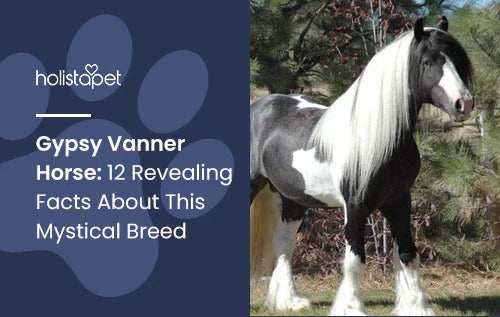
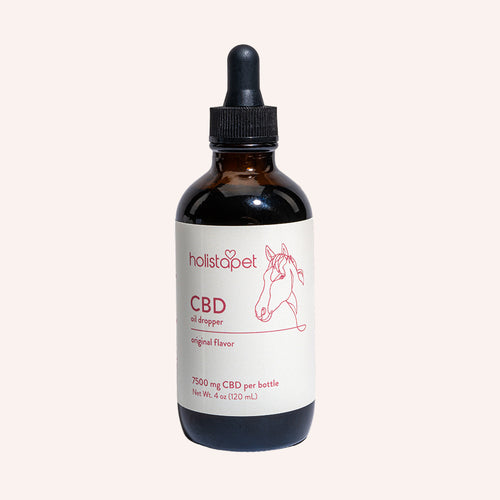 CBD Oil for Horses - Fast Acting
CBD Oil for Horses - Fast Acting
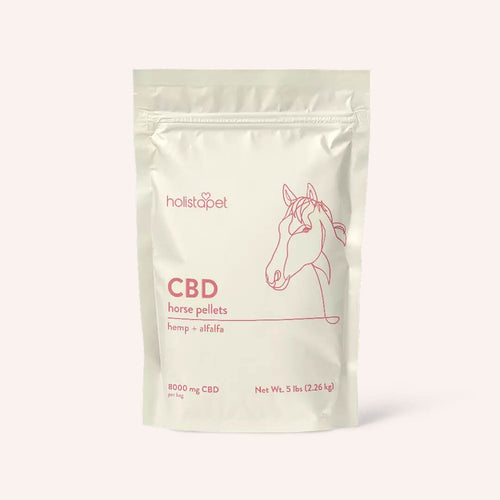 CBD Pellets for Horses - Easy Dose
CBD Pellets for Horses - Easy Dose
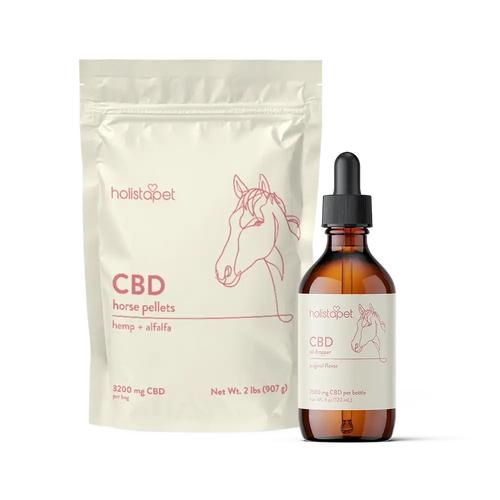 "Ridin' On My Horse" Bundle - Highly Rated
"Ridin' On My Horse" Bundle - Highly Rated


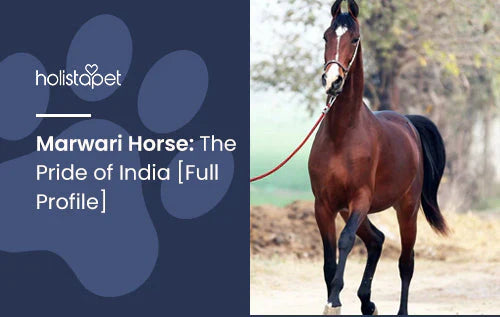
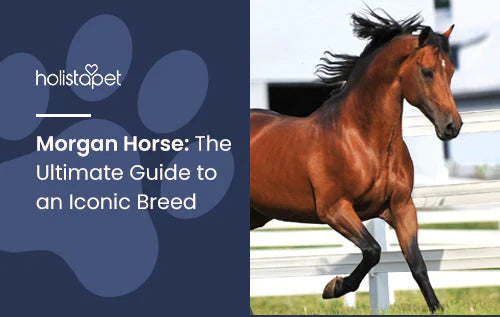

Leave a comment
All comments are moderated before being published.
This site is protected by hCaptcha and the hCaptcha Privacy Policy and Terms of Service apply.